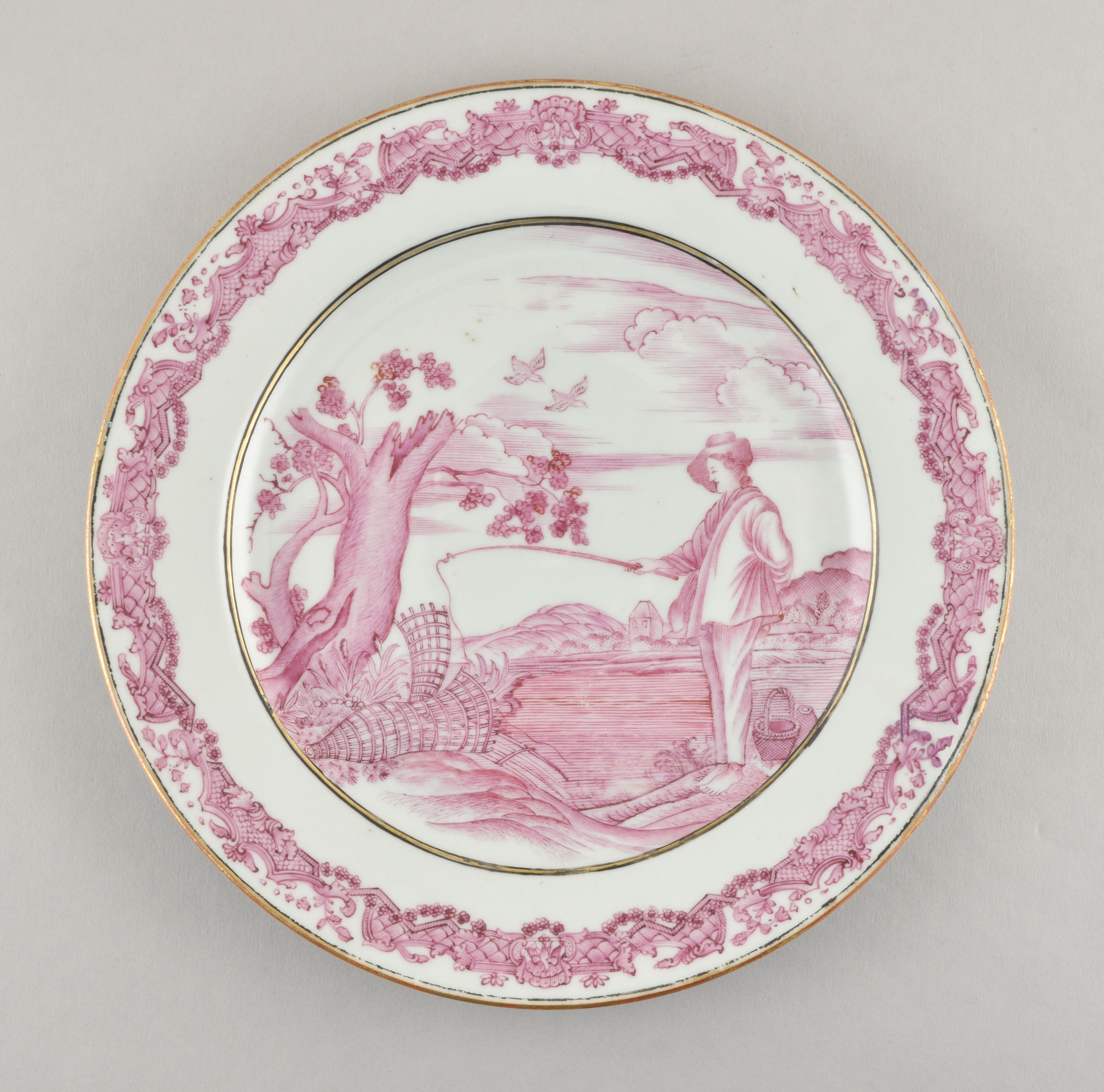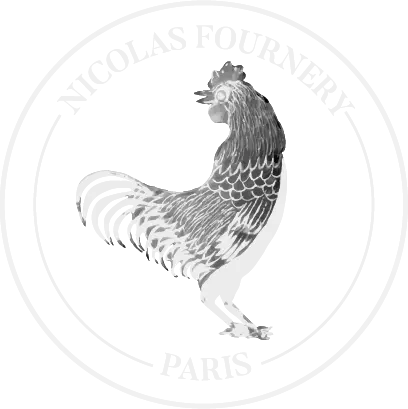Décorée en camaïeu carmin avec au centre avec une scène de pêche, un jeune homme debout pieds nus sur une berge tenant sa canne, à côté de deux grands paniers de pêche sous un tronc d’arbre avec des oiseaux en vol, l’aile décorée dans le style de Du Pasquier.

